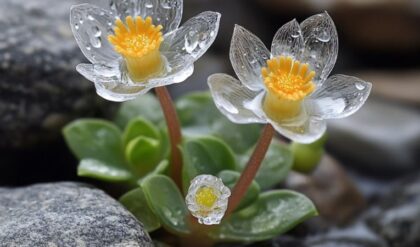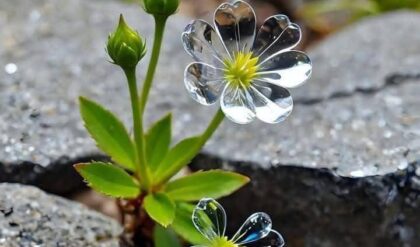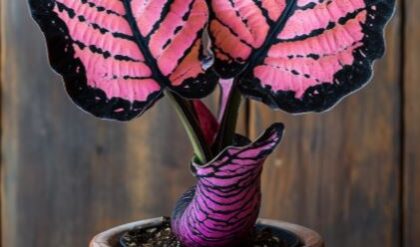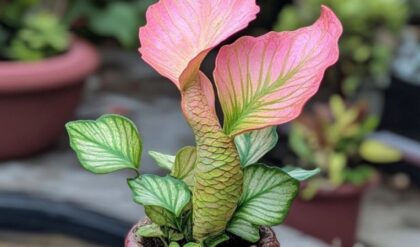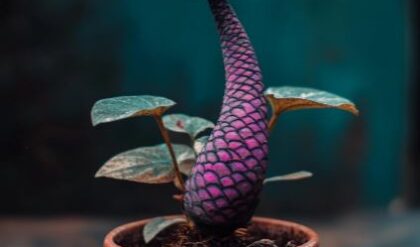Elephant Ear plants, with their majestic foliage and tropical allure, have captivated gardeners and nature enthusiasts for generations. These remarkable plants, belonging to the genera Colocasia, Alocasia, and Xanthosoma, bring a touch of exotic beauty to any space they inhabit. Their impressive, heart-shaped leaves—reminiscent of their namesake’s ears—create a striking focal point in gardens, patios, and even indoor settings. As we embark on this exploration of Elephant Ear plants, we’ll uncover the secrets to their cultivation, delve into their rich cultural heritage, and discover the myriad ways they enhance our environments and ecosystems.
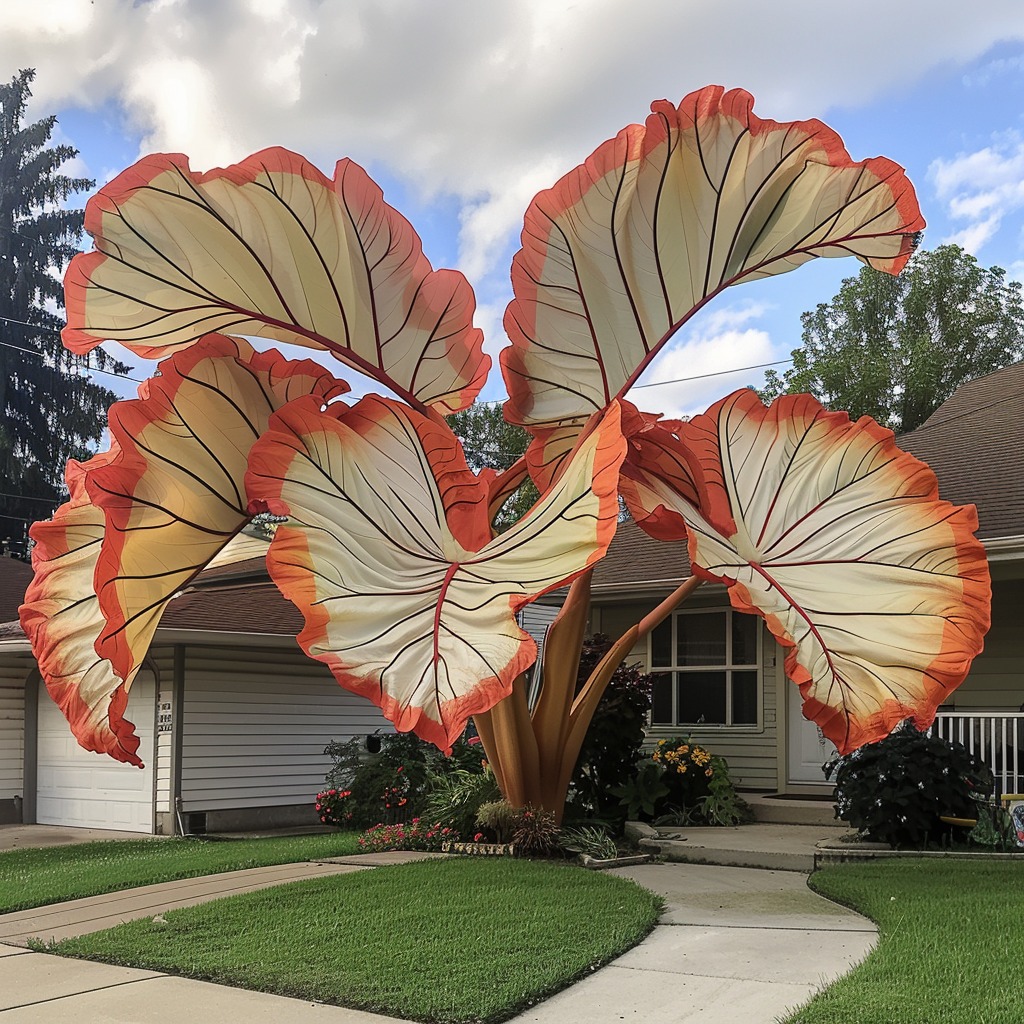
Introduction to Elephant Ear Plants
Elephant Ear plants stand as a testament to nature’s ability to inspire awe through sheer size and beauty. These tropical perennials have made their way from lush rainforests to become beloved additions to gardens worldwide, captivating with their dramatic presence and versatility.
Overview of Colocasia, Alocasia, and Xanthosoma
The term “Elephant Ear” encompasses several genera within the Araceae family, primarily Colocasia, Alocasia, and Xanthosoma. Each genus brings its own unique characteristics to the table, contributing to the diverse array of Elephant Ear varieties available to enthusiasts.
Colocasia, often referred to as taro, is perhaps the most well-known of the trio. Native to Southeast Asia, these plants have been cultivated for thousands of years, not just for their ornamental value but also as a vital food source. Colocasia esculenta, the common taro, boasts large, heart-shaped leaves that can reach impressive dimensions, often growing up to 3 feet in length.
Alocasia, while similar in appearance to Colocasia, offers a more diverse range of leaf shapes and colors. Some Alocasia species feature dramatic arrow-shaped leaves, while others showcase intricately veined patterns that add depth and texture to their foliage. These plants are often favored for their striking architectural qualities, making them popular choices for both outdoor and indoor settings.
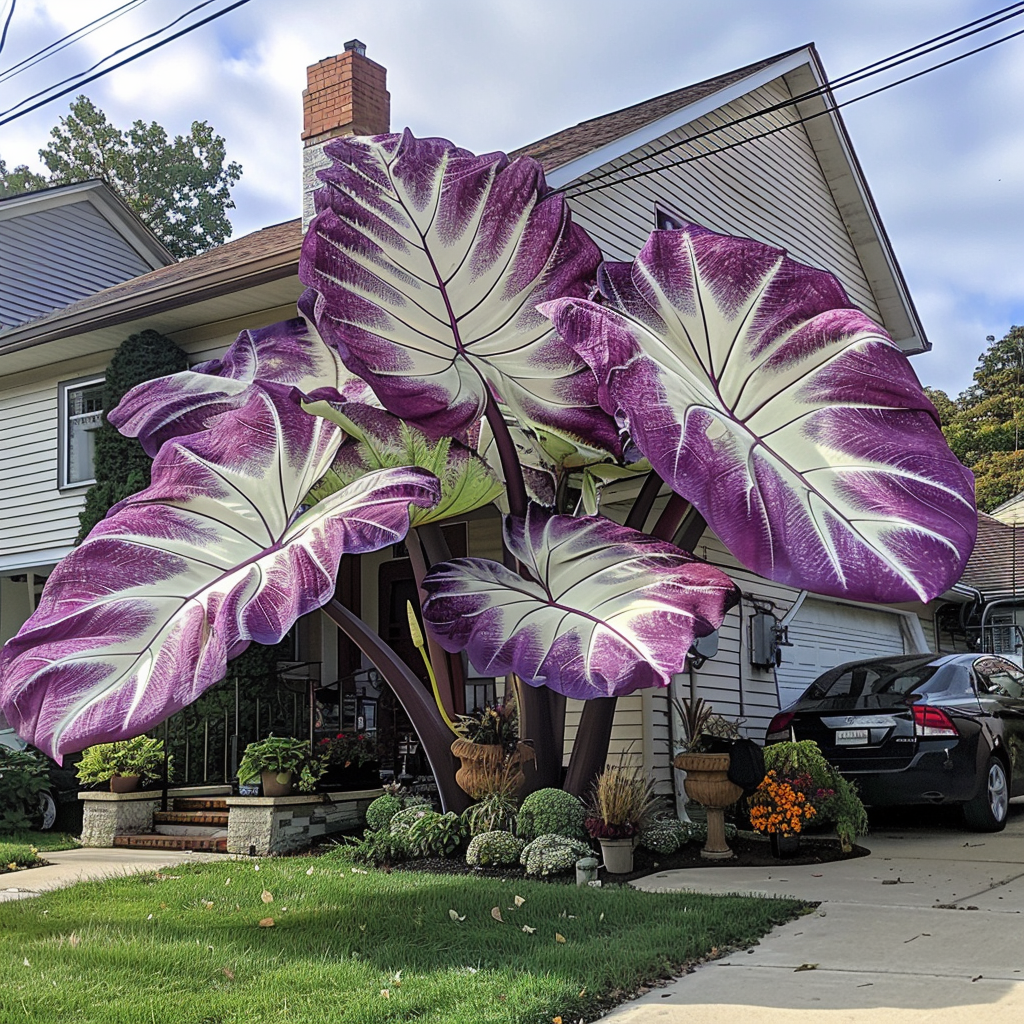
Xanthosoma, sometimes called Blue Taro or Tannia, rounds out the Elephant Ear triumvirate. Native to tropical America, Xanthosoma species tend to have more elongated leaves compared to their cousins. They’re known for their hardiness and ability to thrive in a variety of conditions, making them a favorite among gardeners looking to add a tropical touch to their landscapes.
Characteristics of Elephant Ear Foliage
The defining feature of Elephant Ear plants is, undoubtedly, their foliage. These leaves are not just large; they’re a spectacle of nature’s design prowess. Varying in size from modest 8-inch spans to jaw-dropping 3-foot widths, Elephant Ear leaves command attention in any setting.
The texture of Elephant Ear foliage adds another layer of intrigue. Many varieties feature a glossy surface that reflects light, creating a dynamic visual effect as the sun moves across the sky. Others have a more matte finish, offering a subtle, sophisticated look. The veining patterns on the leaves are often pronounced, creating natural artwork that can be appreciated up close.
Color variations among Elephant Ear plants are surprisingly diverse. While the classic deep green is most common, cultivars have been developed that showcase a spectrum of hues. Some varieties boast leaves with purple undertones, while others feature striking variegation patterns of white or yellow. The stems of Elephant Ear plants also contribute to their overall aesthetic, ranging from pale green to deep burgundy, depending on the species and variety.
The Allure of Elephant Ear Plants
The magnetic appeal of Elephant Ear plants lies not just in their impressive size, but in their ability to transform spaces, creating lush, tropical atmospheres with minimal effort. Their presence in a garden or home instantly evokes images of exotic locales, bringing a slice of paradise to everyday environments.
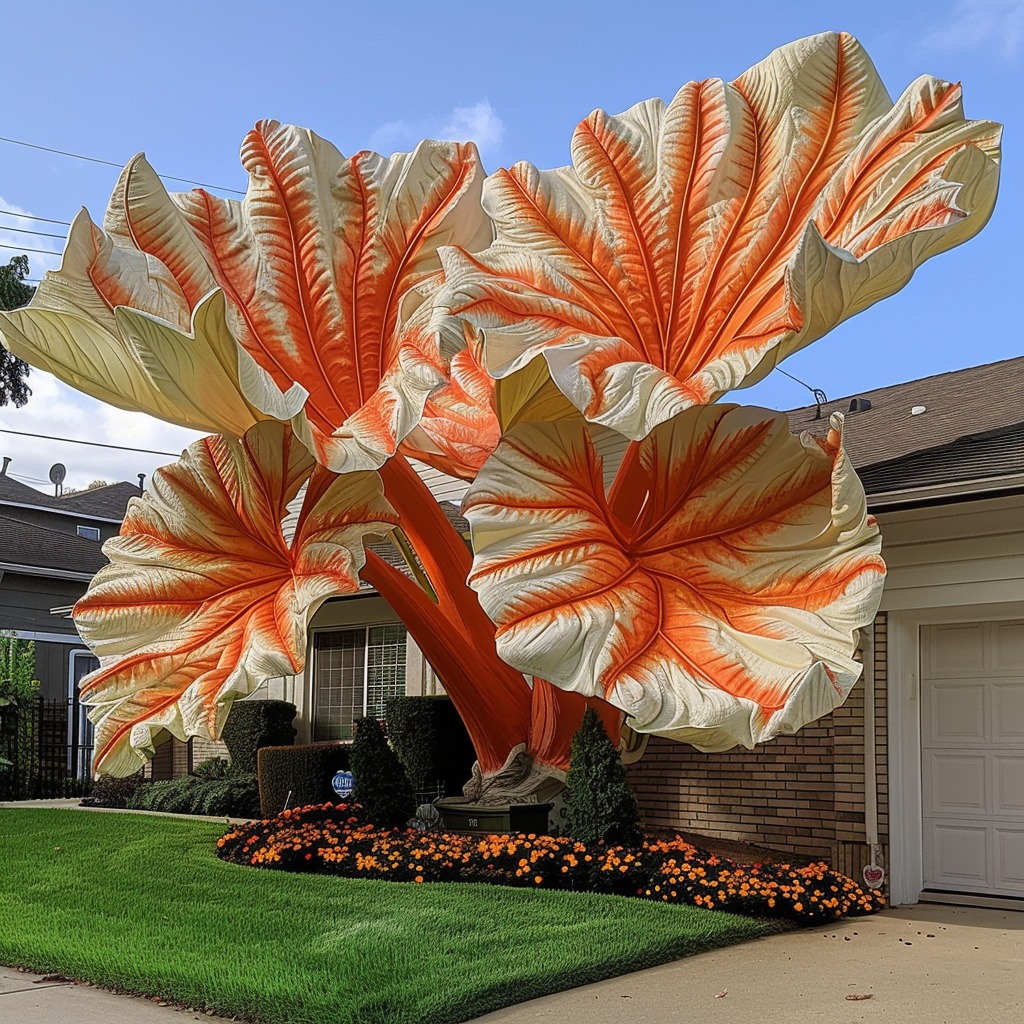
Aesthetic Appeal in Landscaping
Elephant Ear plants serve as powerful focal points in landscape design, their oversized leaves creating dramatic silhouettes that draw the eye and anchor garden compositions. Their versatility allows them to shine in various settings, from formal gardens to more naturalistic landscapes.
In formal garden designs, Elephant Ears can be used to create symmetry and structure. Placed in large containers flanking an entrance or pathway, they add a touch of grandeur and sophistication. Their large leaves provide a contrast to smaller, more delicate plantings, creating depth and interest in garden beds.
For more naturalistic landscapes, Elephant Ears excel at creating the illusion of a tropical oasis. When planted in groups near water features, they evoke the lush growth of a rainforest stream. Their ability to thrive in moist conditions makes them perfect companions for pond edges or boggy areas, where they can reach their full, impressive potential.
The textural contrast provided by Elephant Ear plants is another key aspect of their landscaping appeal. When paired with fine-textured plants like ornamental grasses or ferns, the bold, broad leaves of Elephant Ears create a striking juxtaposition that adds visual interest and depth to garden designs.
Creating Tropical Ambiance at Home
Beyond their outdoor applications, Elephant Ear plants have found a special place in indoor decor, bringing a touch of the tropics to interior spaces. Their large leaves make them excellent statement plants, capable of filling empty corners or serving as living sculptures in minimalist settings.
In home interiors, Elephant Ears contribute to a sense of lush abundance that can transform the atmosphere of a room. Placed near a bright window, they create a natural privacy screen while filtering light, casting intriguing shadows that change throughout the day. This dynamic quality adds a layer of visual interest that static decor elements can’t match.
The presence of Elephant Ear plants indoors also offers tangible benefits beyond aesthetics. As large-leaved plants, they are efficient air purifiers, helping to improve indoor air quality by filtering out common pollutants. This dual function of beauty and utility makes them particularly valuable in urban environments where green space may be limited.
For those looking to create a cohesive indoor-outdoor living space, Elephant Ears provide a perfect bridge. Using these plants both inside and outside creates a visual continuity that blurs the lines between interior and exterior, expanding the sense of space and bringing the calming influence of nature into the home.
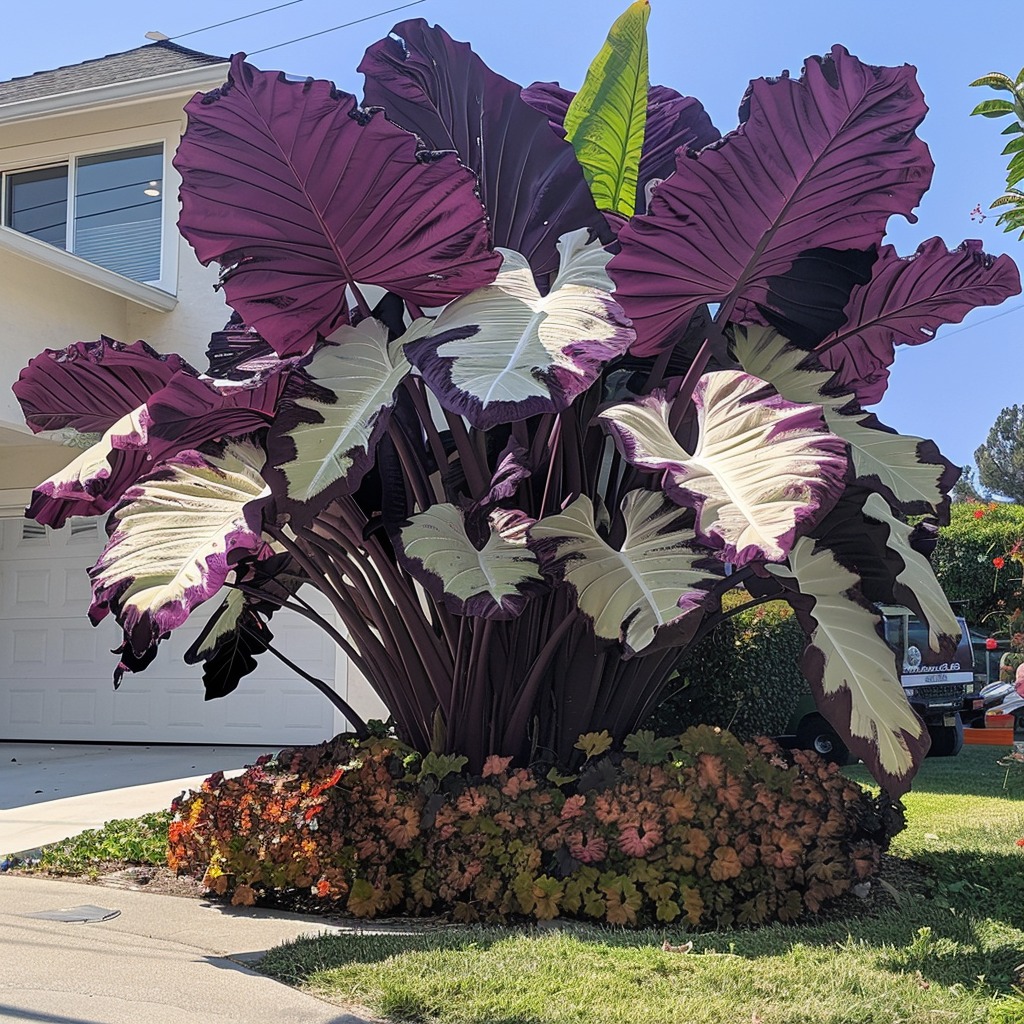
Growth Requirements and Care
Successfully cultivating Elephant Ear plants requires an understanding of their native habitats and the conditions that allow them to thrive. By mimicking these conditions, gardeners can enjoy the full splendor of these magnificent plants, whether in tropical climates or more temperate regions.
Ideal Climate for Elephant Ears
Elephant Ear plants are quintessentially tropical, thriving in warm, humid environments that mirror their native habitats. Ideally, they prefer temperatures between 60°F to 85°F (15°C to 29°C), with high humidity levels that keep their large leaves lush and vibrant.
In their natural settings, Elephant Ears experience consistent warmth throughout the year, which allows for continuous growth. For gardeners in temperate zones, this presents both challenges and opportunities. While these plants may not achieve the same year-round growth as in tropical climates, they can still be successfully cultivated with proper care and protection during colder months.
Humidity plays a crucial role in the health of Elephant Ear plants. In areas with lower natural humidity, gardeners can increase moisture levels around the plants by misting the leaves regularly, using pebble trays filled with water, or employing humidifiers for indoor specimens. Grouping plants together also helps create a microclimate with higher humidity, benefiting all the plants involved.
For those in cooler climates, Elephant Ears can be grown as annuals or brought indoors during winter. This adaptability allows gardeners across various regions to enjoy these tropical beauties, albeit with some additional effort in climate control and seasonal care.
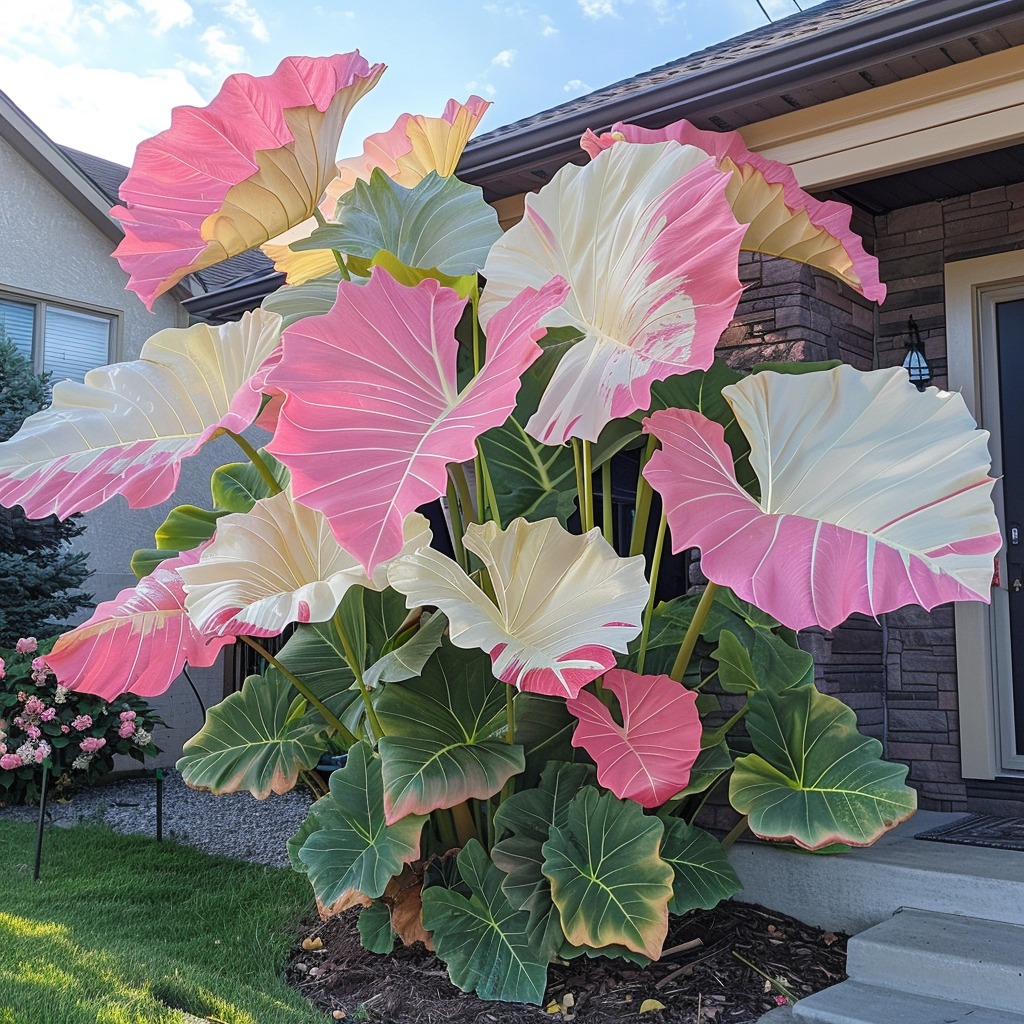
Soil Preferences and Moisture Needs
The key to thriving Elephant Ear plants lies in the soil and moisture conditions. These plants prefer rich, well-draining soil that retains moisture without becoming waterlogged. A soil mix high in organic matter closely mimics the nutrient-rich forest floors of their native habitats.
Ideal soil pH for Elephant Ears ranges from slightly acidic to neutral (6.0 to 7.0). This pH range ensures optimal nutrient uptake, supporting robust growth and vibrant foliage. For container-grown plants, a mix of potting soil, peat moss, and perlite can provide the right balance of nutrients, moisture retention, and drainage.
Water requirements for Elephant Ears are substantial, reflecting their tropical origins. These plants thrive in consistently moist soil, reminiscent of the damp conditions found near streams and in forest understories. Regular watering is essential, especially during active growth periods in spring and summer.
However, it’s crucial to strike a balance – while Elephant Ears love moisture, they are susceptible to root rot if left in standing water. Proper drainage is therefore as important as regular watering. For in-ground plants, amending heavy soils with organic matter can improve drainage. Container-grown specimens benefit from pots with adequate drainage holes and a layer of gravel at the bottom to prevent water from pooling.
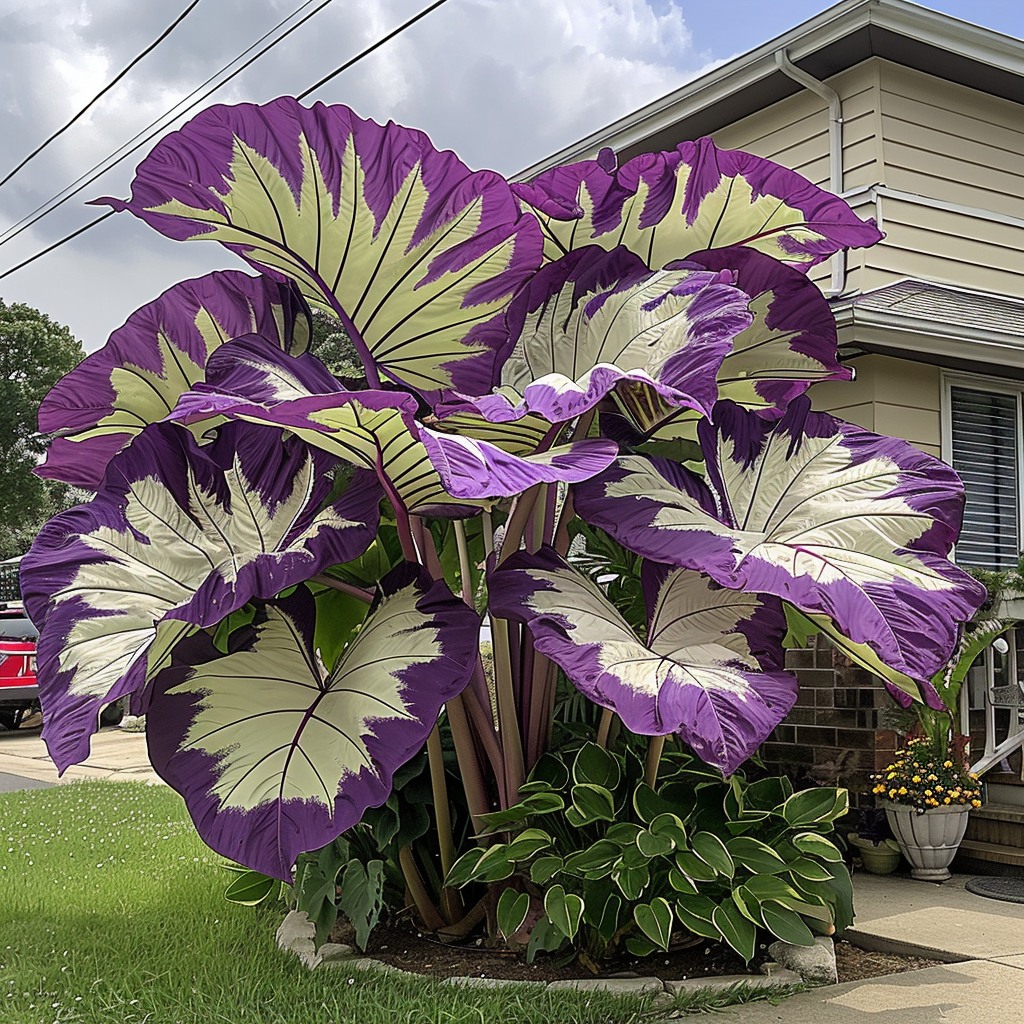
Light Conditions: Sunlight vs. Shade
The light requirements of Elephant Ear plants can vary depending on the specific species and variety, but generally, they prefer conditions that mimic the dappled sunlight of their native forest habitats.
Most Elephant Ear varieties thrive in partial shade to full shade conditions. This preference for lower light levels is particularly true for varieties with darker foliage, which can be susceptible to leaf burn in direct, intense sunlight. In these shadier spots, Elephant Ears can reach their full potential, developing large, healthy leaves without the risk of sun damage.
However, some Elephant Ear varieties, particularly those with lighter or variegated foliage, can tolerate and even benefit from more sunlight. These plants often develop more vibrant colors when exposed to brighter conditions. Morning sun followed by afternoon shade often provides an ideal balance, allowing for robust growth while protecting the leaves from the harshest midday rays.
For indoor Elephant Ears, bright, indirect light is ideal. Placing them near east or north-facing windows usually provides the right amount of light without the risk of leaf scorch. If grown under lower light conditions indoors, growth may be slower, and the plants might not achieve the same impressive size as their outdoor counterparts.
Adapting to the specific light conditions of your space is key to success with Elephant Ears. Observing the plant’s response to its environment and adjusting placement accordingly can help ensure that these magnificent plants reach their full potential, whether as garden centerpieces or striking indoor specimens.
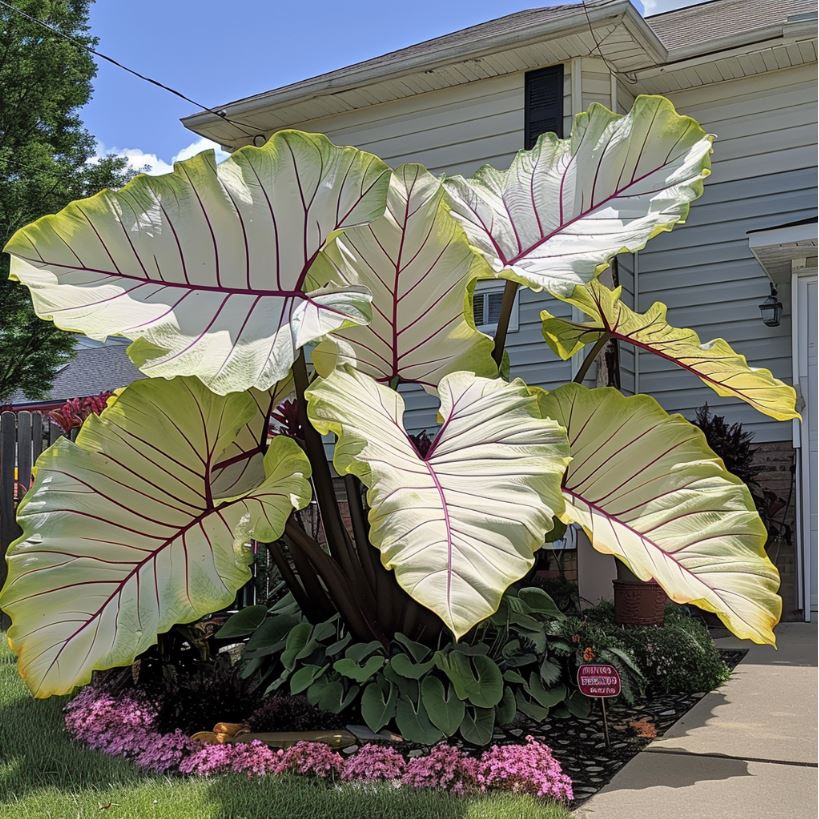
Propagation Techniques
Propagating Elephant Ear plants offers gardeners the opportunity to expand their collection and share these magnificent plants with others. The process not only allows for the creation of new plants but also deepens one’s understanding of these tropical beauties.
Growing from Tuberous Rhizomes
The most common and efficient method of propagating Elephant Ear plants is through their tuberous rhizomes. These underground storage organs are not only the source of new growth but also the key to the plant’s survival during dormant periods.
Rhizome division is best performed in early spring, just before the active growing season begins. To start:
- Carefully dig up the dormant plant, taking care not to damage the rhizomes.
- Gently brush off excess soil to expose the rhizome structure.
- Look for natural division points or “eyes” on the rhizome, similar to those found on potato tubers.
- Using a clean, sharp knife, cut the rhizome into sections, ensuring each piece has at least one growth point and a portion of the root system.
- Allow the cut surfaces to dry for a day or two to prevent rot when replanting.
When replanting the divided rhizomes, choose a location that mimics the parent plant’s preferred conditions. Plant them about 2-3 inches deep in rich, well-draining soil. Water thoroughly after planting and maintain consistent moisture as new growth emerges.
For those in colder climates, rhizomes can be stored over winter and replanted in spring. After the first frost, cut back the foliage, dig up the rhizomes, and store them in a cool, dry place packed in peat moss or vermiculite. This method not only preserves the plants but also provides an excellent opportunity for propagation come spring.
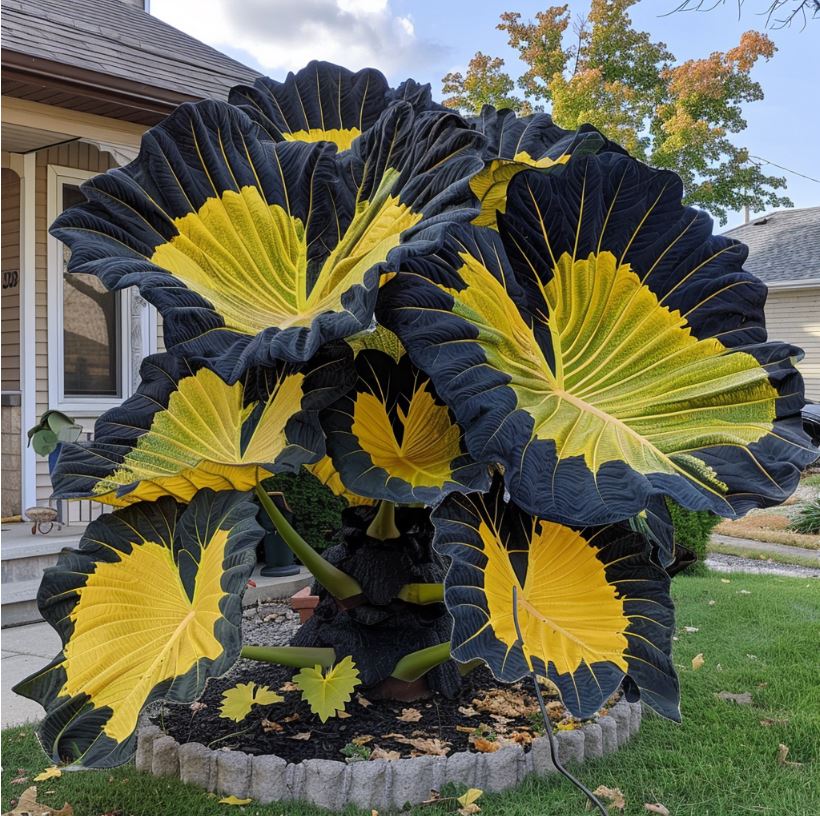
Experimenting with Different Varieties
While rhizome division is the most straightforward propagation method, adventurous gardeners can explore other techniques to expand their Elephant Ear collection. These methods not only provide new plants but also offer insights into the growth habits of different varieties.
Stem cuttings can be successful with some Elephant Ear species, particularly those in the Alocasia genus. To attempt this method:
- Select a healthy stem with at least two leaves.
- Cut the stem below a node (where a leaf attaches to the stem).
- Remove the lower leaves, leaving only the top one or two.
- Place the cutting in water or a moistened rooting medium.
- Keep the cutting in a warm, humid environment until roots develop.
This method requires patience and careful attention to humidity levels but can result in exact clones of the parent plant.
For those interested in hybridization, some Elephant Ear varieties can be propagated from seeds. This method is less common and more challenging but offers the exciting possibility of creating unique cultivars. To attempt seed propagation:
- Collect seeds from mature plants or obtain them from reputable sources.
- Sow the seeds in a warm, moist growing medium.
- Maintain high humidity and consistent warmth (around 70-80°F) for germination.
- Once seedlings emerge, provide bright, indirect light and consistent moisture.
Seed-grown plants may not always resemble the parent exactly, adding an element of surprise to the propagation process.
Experimenting with these various propagation methods not only expands one’s Elephant Ear collection but also deepens the gardener’s understanding of plant biology and genetics. It’s a rewarding process that combines science and artistry, allowing for the creation of unique garden specimens and the potential for new, exciting varieties.
Varieties of Elephant Ear Plants
The world of Elephant Ear plants is vast and diverse, offering a wide array of species and cultivars to suit various tastes and garden designs. From towering giants to compact varieties suitable for container gardening, the range of Elephant Ears available to enthusiasts is truly impressive.
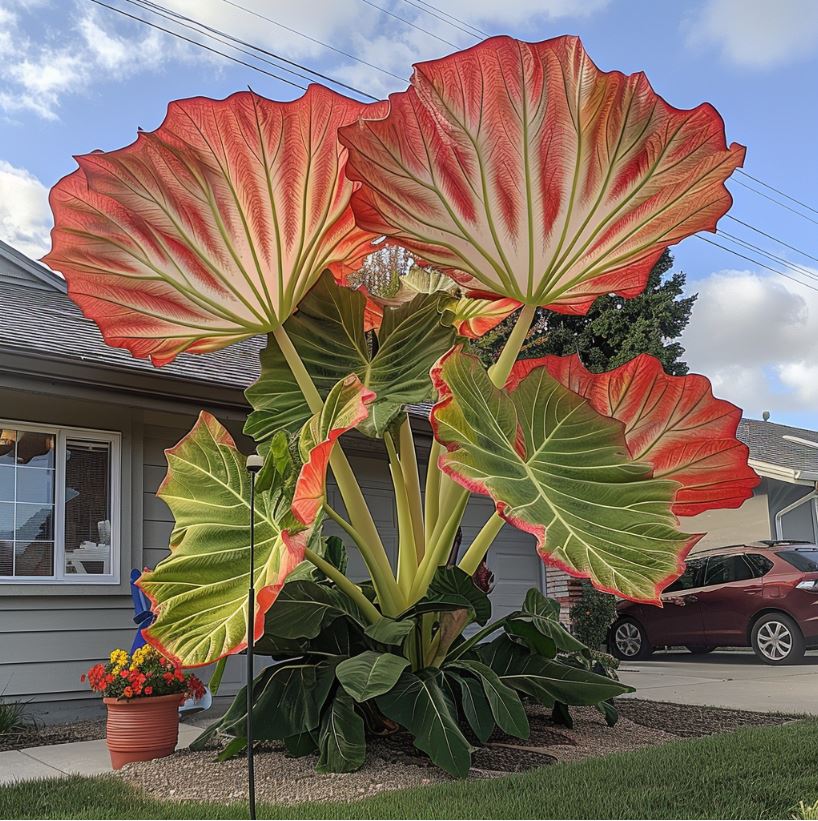
Popular Species and Their Unique Traits
Colocasia esculenta, commonly known as taro, is perhaps the most well-known Elephant Ear species. It’s prized not only for its ornamental value but also for its edible tubers, which are a staple food in many tropical regions. The leaves of C. esculenta can reach impressive sizes, often spanning 2-3 feet in length. Varieties like ‘Black Magic’ offer striking purple-black foliage, adding a dramatic touch to gardens.
Alocasia macrorrhiza, or Giant Taro, lives up to its name with leaves that can grow up to 6 feet long. This species is perfect for creating instant tropical impact in large garden spaces or as a stunning focal point. The ‘Variegata’ cultivar of this species features creamy white variegation, adding a touch of brightness to shaded areas.
Xanthosoma sagittifolium, known as Arrowleaf Elephant Ear, is characterized by its distinctly arrow-shaped leaves. This species tends to be more cold-hardy than some of its relatives, making it a good choice for gardeners in slightly cooler climates. The ‘Lime Zinger’ variety offers vibrant chartreuse foliage that can brighten up shady corners.
Alocasia amazonica, despite its name, is actually a hybrid created in cultivation. Its dark green leaves with prominent white veins make it a popular choice for indoor plantings. This variety stays relatively compact, rarely exceeding 3 feet in height, making it suitable for smaller spaces.
Colocasia ‘Thailand Giant’ is renowned for producing some of the largest leaves in the Elephant Ear family, with some specimens boasting leaves up to 9 feet long and 5 feet wide. This variety is a showstopper in large garden settings, creating an instant tropical atmosphere.
Edible vs. Ornamental Varieties
While many Elephant Ear plants are grown purely for their ornamental value, several species have significant culinary importance in various cultures. Understanding the distinction between edible and purely ornamental varieties is crucial for gardeners interested in exploring the culinary aspects of these plants.
Colocasia esculenta, as mentioned earlier, is the primary edible species among Elephant Ears. Its tubers, leaves, and stems are all used in cooking across many tropical and subtropical regions. The tubers are rich in carbohydrates and are often prepared similarly to potatoes. However, it’s important to note that proper preparation is essential, as raw taro contains calcium oxalate crystals that can cause irritation.
Varieties of C. esculenta bred specifically for food production often have different characteristics from their ornamental counterparts. They may have larger, more developed tubers and less showy foliage. Cultivars like ‘Bun Long’ and ‘Lehua Maoli’ are prized for their flavor and texture in culinary applications.
On the ornamental side, many Alocasia and Xanthosoma species, while technically edible, are primarily grown for their striking foliage. These plants often have higher concentrations of oxalates and are not typically used for food. Varieties like Alocasia ‘Polly’ or Xanthosoma ‘Lime Zinger’ are celebrated for their unique leaf patterns and colors rather than their edibility.
Itis essential for gardeners to understand the functional differences between edible and ornamental varieties to ensure correct usage in the garden and kitchen.
Choosing the right variety of Elephant Ear plants can significantly impact not only aesthetic appeal but also culinary potential, depending on the gardener’s goals. By selecting species that align with their interests—be it creating an eye-catching landscape or cultivating a unique vegetable patch—gardeners can make informed decisions that enhance both the beauty and productivity of their outdoor spaces.
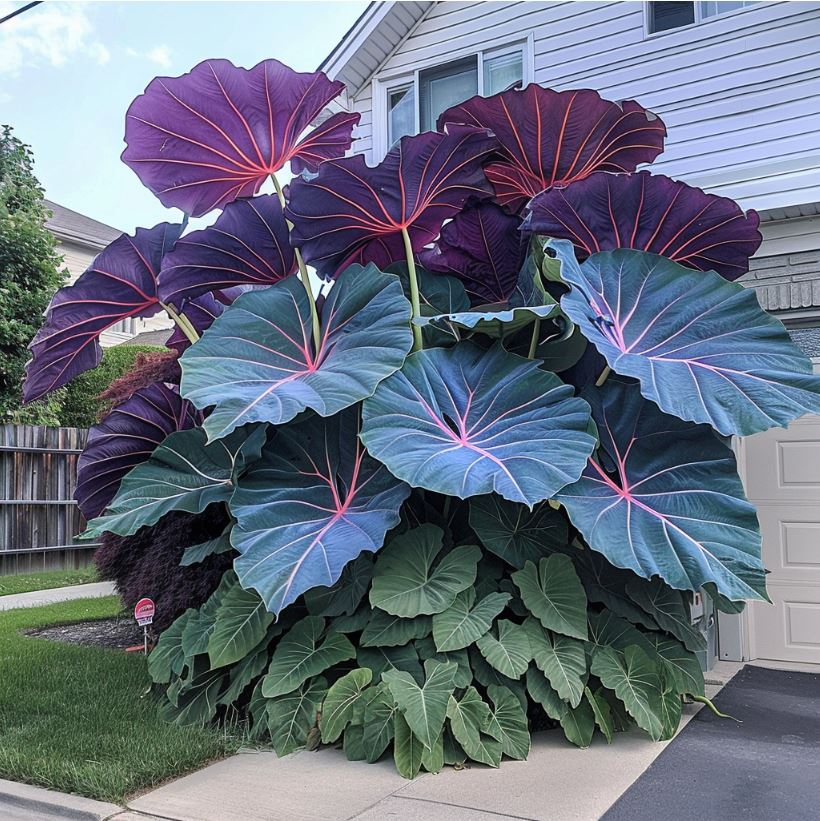
Cultural Significance of Elephant Ear Plants
Throughout history, Elephant Ear plants have held various cultural significances across different regions of the world. Their majestic foliage and substantial size have made them symbols of strength, resilience, and connection to nature in many cultures. Exploring these meanings can deepen our appreciation for these remarkable plants beyond their visual allure.
Symbolism in Various Cultures
In several Southeast Asian cultures, particularly among Pacific Island communities, the Colocasia esculenta plant is more than just an ornamental feature; it is a vital food source and a symbol of sustenance. The large, lush leaves are often associated with prosperity and abundance, reflecting the importance of agriculture and connection to the land. In these communities, taro leaves are used in traditional dishes, and the tuber itself is celebrated during harvest festivals.
In African cultures, particularly in West Africa, the Elephant Ear plant has been embraced as a representation of life and growth. Taro cultivation is interwoven with local traditions, often playing a role in rituals, celebrations, and communal gatherings. For example, the cooking and sharing of taro dishes can symbolize unity and togetherness, reinforcing social bonds within communities.
The symbolism of Elephant Ears extends to their use in decorative arts and textiles. In some cultures, the distinctive leaf shapes have inspired designs in fabric, pottery, and crafts, showcasing the plant’s significance in daily life and artistic expression. The striking foliage serves as a reminder of nature’s beauty and its role in human creativity.
Role in Celebrations and Rituals
Beyond their symbolic meanings, Elephant Ear plants often play active roles in cultural celebrations and rituals. In Hawaii, for instance, taro is considered a sacred plant, known as “kalo.” It is deeply integrated into Hawaiian identity, with the cultivation and preparation of kalo being central to traditional practices. During special occasions, such as luaus and family gatherings, dishes made from taro are served as a way to honor ancestry and heritage.
In other parts of the world where Elephant Ears are grown, they may be featured in seasonal festivals or agricultural fairs. Events that celebrate harvest time may highlight the importance of crops like taro, showcasing the connection between people and the land. The presence of these impressive plants at such events serves as a reminder of the community’s relationship with nature and the bounty it provides.
For gardeners, understanding the cultural significance of Elephant Ear plants offers a richer perspective on their cultivation. Incorporating these plants into a garden can become a personal homage to the traditions and values of diverse cultures, especially if one chooses to grow edible varieties alongside ornamental ones. This fusion of beauty and function can create a meaningful garden space that resonates with deeper connections to heritage and community.
Ecological Impact of Elephant Ear Plants
As significant contributors to garden aesthetics and culture, Elephant Ear plants also play an important role in local ecosystems. Their large leaves and robust growth habits provide essential benefits to wildlife, making them valuable additions to any garden or landscape.
Habitat Creation for Wildlife
Elephant Ear plants serve as excellent habitat for various wildlife species, particularly in areas that mimic their native tropical environments. The broad leaves provide shelter and cover for small animals, birds, and beneficial insects. As these plants thrive in moist conditions, they create microhabitats that support a diverse range of creatures.
Pollinators, such as bees and butterflies, are especially drawn to flowering varieties of Elephant Ears. While many species are primarily grown for their foliage, some do produce flowers that can attract these vital insects. By incorporating a mix of flowering and non-flowering varieties into a garden, gardeners can create an inviting environment for pollinators, which play a crucial role in maintaining ecological balance.
Furthermore, Elephant Ear plants can improve soil health by contributing organic matter through leaf drop and decomposition. This process enriches the surrounding soil and creates a better habitat for beneficial soil organisms, promoting overall ecosystem health.
Contribution to Local Ecosystems
In addition to providing habitats, Elephant Ear plants positively influence local ecosystems by mitigating erosion and improving water retention in soil. Their extensive root systems help anchor loose soil, preventing runoff and stabilizing the ground. This quality is particularly valuable in gardens situated on slopes or near water bodies, where soil erosion can be a concern.
Moreover, due to their high transpiration rates, Elephant Ears contribute to local humidity levels, fostering a microclimate that can benefit other nearby plants. This aspect is particularly advantageous in dry or arid regions, where moisture retention can be a challenge. By planting Elephant Ears strategically within a garden, gardeners can create a more balanced ecosystem that supports a wider variety of flora and fauna.
By understanding and embracing the ecological impact of Elephant Ear plants, gardeners can enhance their landscaping efforts while supporting local biodiversity and environmental health. Such awareness transforms gardening into a holistic practice, where beauty and sustainability coexist harmoniously.
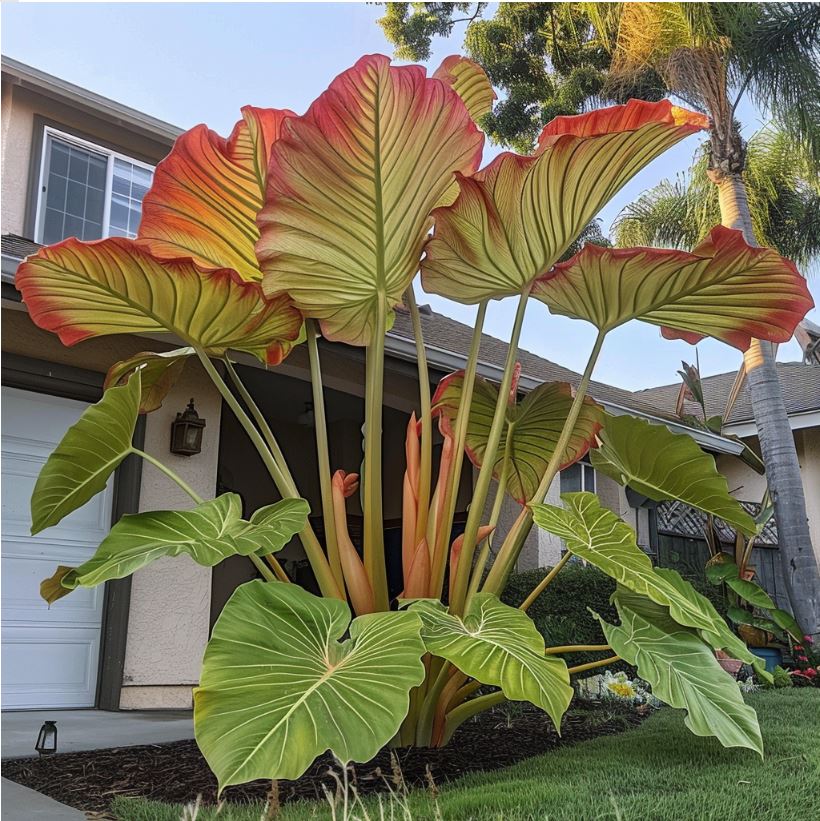
Common Pests and Diseases
While Elephant Ear plants are resilient and hardy, they can still face challenges from pests and diseases that threaten their growth and vitality. Being proactive about pest management and disease prevention is essential for maintaining healthy plants and a flourishing garden.
Identifying Pests Affecting Elephant Ears
Common pests that affect Elephant Ear plants include aphids, spider mites, and mealybugs. Aphids, small sap-sucking insects, can cluster on new growth, causing distorted leaves and stunted growth. Spider mites, on the other hand, thrive in dry conditions and produce fine webs on the undersides of leaves, leading to yellowing foliage. Mealybugs can be identified by their white, cottony appearance, often found along stems and leaf axils.
Regular inspections of the plants are crucial for early detection of these pests. Checking the undersides of leaves and the emerging leaf buds will help identify infestations before they become severe. Maintaining good air circulation and avoiding overcrowding can also deter pest populations from establishing themselves.
Preventive Measures and Treatment Options
Preventative measures play a significant role in keeping Elephant Ear plants free from pests and diseases. Starting with healthy plants, proper watering techniques, and appropriate fertilization can create a strong foundation for growth. Avoid overwatering, as this can lead to root rot—a common issue with Elephant Ears that thrive in well-drained soil.
If infestations occur, there are several treatment options available. Neem oil and insecticidal soaps are both effective organic solutions for managing pests without harming beneficial insects. Regularly spraying the leaves and ensuring thorough coverage will help mitigate pest populations. For more severe infestations, chemical pesticides may be considered, but caution should be exercised to prevent damage to the surrounding ecosystem.
Maintaining optimal care practices, combined with vigilant monitoring for pests, will allow gardeners to enjoy thriving Elephant Ear plants year after year. The balance of vigilance and nurturing can yield stunning results, creating a lush and vibrant garden that showcases these beautiful plants.
Seasonal Care Tips
Seasonal care is crucial for the longevity and health of Elephant Ear plants. Whether preparing them for winter dormancy or maximizing their growth during the summer months, tailored care strategies ensure these tropical beauties flourish in varying climates.
Winterizing Elephant Ears
In colder regions, winter can pose a challenge for Elephant Ear plants, which are typically not frost-tolerant. To prepare for the winter months, gardeners need to assess their growing conditions and take appropriate steps.
Before the first frost, it’s advisable to dig up tubers and store them indoors. Carefully lift the rhizomes using a spade, ensuring minimal damage. After removing excess soil, allow the tubers to dry for a few days, then store them in a cool, dark place in peat moss or shredded newspaper. This dormant period helps preserve the rhizomes until spring when they can be replanted.
For those growing Elephant Ears as annuals, cutting back the foliage to a few inches above ground can help minimize potential issues with rot and pests during winter. Applying mulch around the base may offer some protection against temperature fluctuations, but for true hardiness, container-grown specimens may need to be brought indoors or sheltered in a greenhouse.
Summer Maintenance Practices
During the growing season, focus shifts towards ensuring that Elephant Ear plants receive adequate water, nutrients, and care for optimal development. Consistent moisture is key, as these plants thrive in damp environments. Regular watering, especially during hot spells, should be prioritized to maintain lush foliage and healthy growth.
Fertilizing every 4-6 weeks during the growing season can also boost growth and enhance leaf color. Using a balanced fertilizer will promote overall health, but gardeners can switch to a higher nitrogen formula to encourage leaf development.
Pruning dead or damaged leaves throughout the growing season will also help maintain plant vigor. Removing spent leaves allows energy to redirect toward new growth, resulting in a fuller and more visually appealing plant. Additionally, regular inspection for pests and diseases remains critical, ensuring any issues are managed promptly before they escalate.
By understanding the specific needs of Elephant Ear plants throughout the seasons, gardeners can cultivate thriving specimens that add beauty and lushness to their landscapes year-round.
Elephant Ear Plants in Container Gardening
Container gardening presents unique advantages for growing Elephant Ear plants, allowing for flexibility in design and easier maintenance. With their dramatic foliage and tropical allure, these plants can serve as stunning focal points in patios, decks, or balconies.
Choosing the Right Pot and Soil
Selecting the appropriate pot is critical for successful container gardening. Elephant Ear plants require ample space for their expansive root systems, so choose a container that is at least 12-18 inches deep and wide. Terracotta pots can be an attractive option but may require more frequent watering, as they tend to dry out faster than plastic or resin containers.
Equally important is the choice of potting soil. A well-draining potting mix that retains moisture is ideal for Elephant Ears. Many gardeners opt for a blend containing peat moss, compost, perlite, or vermiculite to achieve the desired balance of drainage and moisture retention. The goal is to keep the soil consistently moist without allowing it to become soggy.
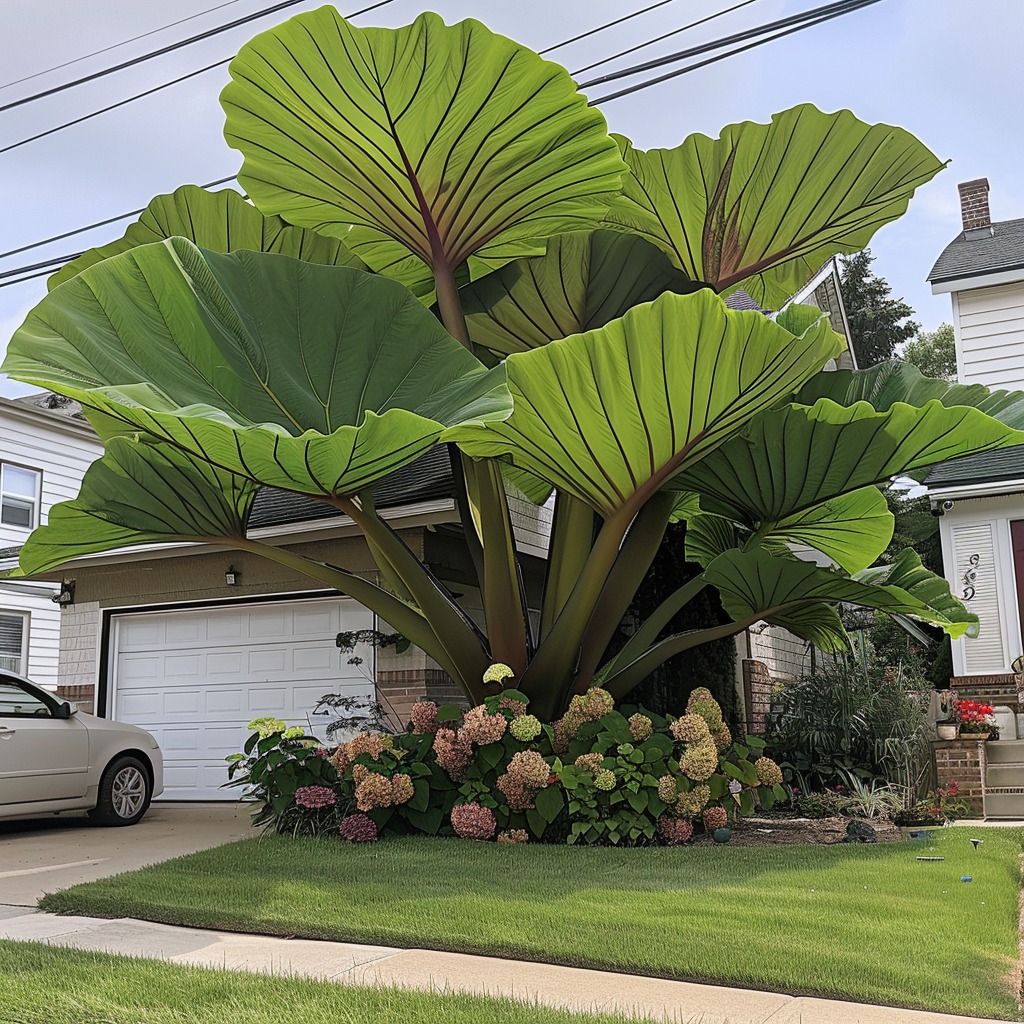
Mobility and Placement Considerations
One of the standout benefits of container gardening is the ability to move plants as needed. Positioning Elephant Ears in bright, indirect light encourages optimal growth, while also allowing for adjustment based on changing weather conditions. For instance, during scorching summer days, moving containers to a shaded area can help protect the delicate leaves from sunburn.
Additionally, consider the aesthetic arrangements when choosing placement. Grouping Elephant Ears with complementary plants can create vibrant displays, enhancing the tropical ambiance. Mixing them with flowering annuals or other foliage plants with contrasting colors can further elevate visual interest.
Container gardening also makes it easier to winterize Elephant Ear plants. When temperatures drop, simply move pots indoors or to a protected location, ensuring the plants remain safe from frost damage. This level of control over the environment allows for extended enjoyment of these captivating plants.
The versatility and adaptability of container gardening lend themselves beautifully to Elephant Ear cultivation. Gardeners can enjoy the beauty of these stunning plants while taking advantage of the practical benefits that come with containerized growing.
Designing with Elephant Ear Plants
When designing a landscape or garden, incorporating Elephant Ear plants offers striking visual elements that can transform outdoor spaces. Their bold foliage provides an exotic flair that complements various garden themes, whether aiming for a tropical paradise or a serene oasis.
Incorporating into Garden Layouts
Integrating Elephant Ear plants into existing garden layouts requires thoughtful consideration of placement and scale. Given their considerable size, positioning larger varieties towards the back or center of borders creates a layered effect, allowing smaller plants to frame them and draw the eye upward.
In large garden settings, grouping multiple Elephant Ears together can create a dramatic statement. Planting in clusters enhances their visual impact and mimics natural growth patterns found in tropical jungles. This bold approach can establish designated “tropical zones” within a garden, immersing visitors in a lush paradise.
For smaller spaces, opting for more compact varieties can still yield stunning results. Planting in pots flanking pathways or entrances invites guests into the garden and sets the tone for a vibrant atmosphere. The juxtaposition of their large foliage against the smaller blooms of companion plants creates a delightful visual contrast.
Companion Planting Strategies
Companion planting with Elephant Ears can enhance garden aesthetics and promote healthy growth. Pairing these majestic plants with colorful flowering companions, such as hibiscus or canna lilies, will amplify the tropical feel while attracting pollinators.
Additionally, combining Elephant Ears with shade-tolerant ferns or hostas can create appealing textures and layers within the landscape. The dynamic interplay of leaf shapes and sizes adds depth and interest to shaded garden corners, transforming them into verdant retreats.
Another effective strategy involves planting Elephant Ears alongside herbs or vegetables that appreciate similar growing conditions. However, it’s essential to monitor nutrient levels to ensure that all plants thrive harmoniously without overcompetition for resources.
By thoughtfully designing with Elephant Ears, gardeners can create breathtaking landscapes that captivate the senses and provide a sanctuary for relaxation and contemplation.
The Role of Elephant Ear Plants in Biodiversity
Embracing biodiversity in gardening not only benefits the surrounding environment but also enriches the gardener’s experience. Elephant Ear plants play a unique role in supporting various forms of life, contributing to healthier ecosystems.
Supporting Pollinators and Beneficial Insects
Elephant Ear plants can attract a range of pollinators, offering a haven for bees, butterflies, and hummingbirds. Some flower-producing varieties release nectar that entices these beneficial creatures, encouraging them to visit gardens frequently. Creating a diverse array of flowering plants alongside Elephant Ears will enhance their role in supporting pollinator populations even further.
By fostering pollinator-friendly environments, gardeners actively participate in preserving these essential species, which face threats from habitat loss and pesticide use. The inclusion of Elephant Ear plants can serve as part of a broader effort to promote biodiversity, ultimately benefiting local ecosystems.
Enhancing Soil Health and Fertility
The presence of Elephant Ear plants can contribute to improved soil health through their leaf drop and decomposition processes. As fallen leaves break down, they return valuable nutrients to the soil, enriching it for future plantings. This natural cycle fosters a thriving soil ecosystem that supports beneficial microorganisms and promotes overall fertility.
Furthermore, Elephant Ears’ extensive root systems help aerate the soil, improving drainage and reducing compaction. This enhanced soil structure enables better water infiltration and root penetration for neighboring plants. Healthy soil encourages vigorous plant growth across the garden, contributing to a thriving, biodiverse landscape.
Recognizing the role of Elephant Ear plants in promoting biodiversity allows gardeners to cultivate spaces that reflect their values and commitment to environmental stewardship. By prioritizing ecological health, they can create gardens that resonate with life, beauty, and sustainable practices.
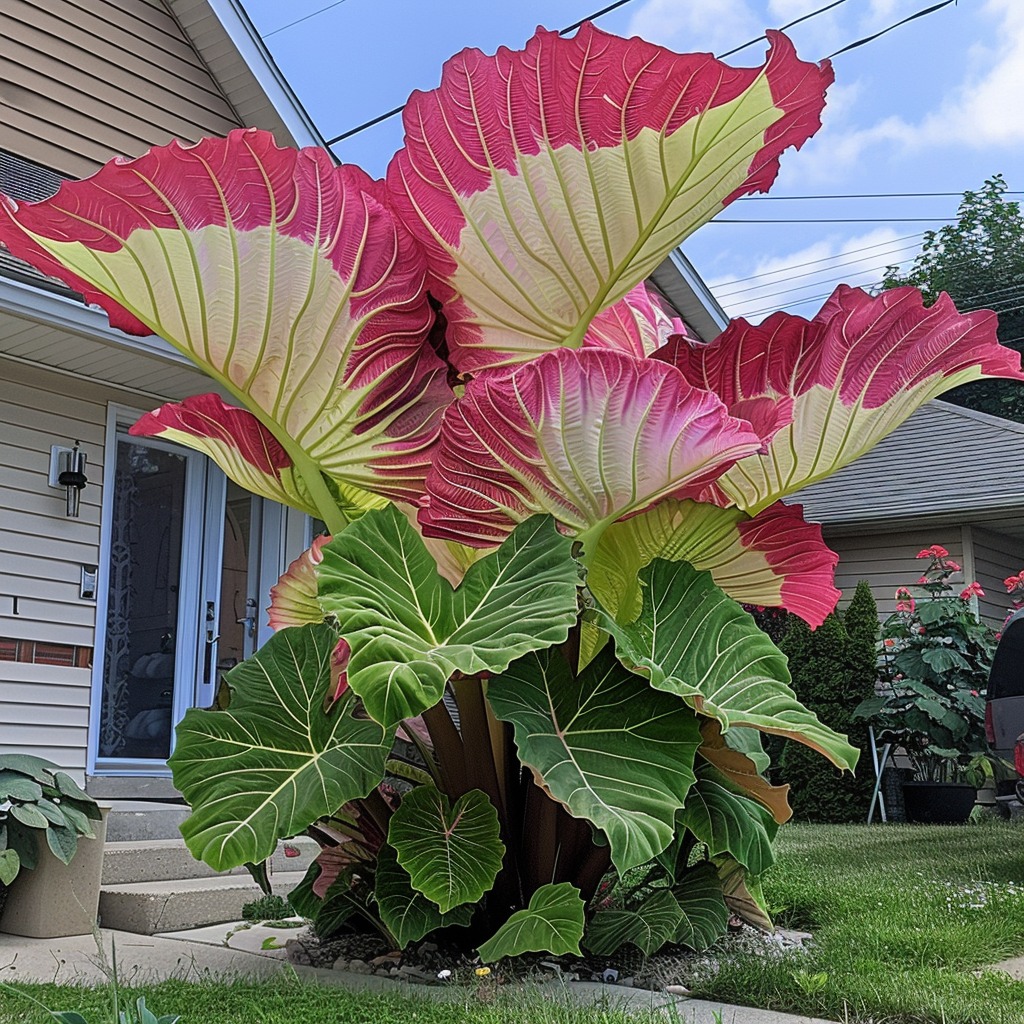
Conclusion
Elephant Ear plants, with their stunning foliage and cultural significance, represent a fascinating intersection of beauty, ecology, and practical gardening. From their diverse varieties to their roles in biodiversity, these plants inspire gardeners to explore their unique qualities and enhance outdoor spaces.
Understanding the nuances of care, propagation methods, and design strategies paves the way for successful cultivation and appreciation of these magnificent plants. By integrating Elephant Ears into gardens thoughtfully, we foster environments that celebrate nature, support local ecosystems, and evoke a sense of tranquility.
Ultimately, Elephant Ear plants serve as reminders of the profound connections we share with the natural world, offering endless opportunities for creativity, exploration, and joy in our gardening endeavors.
